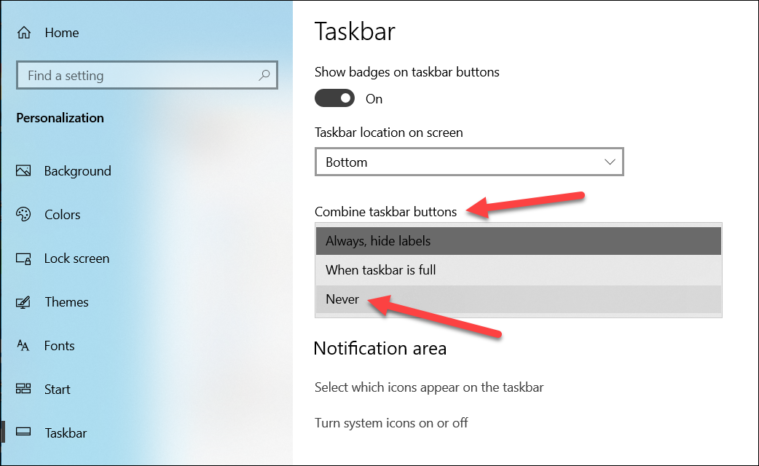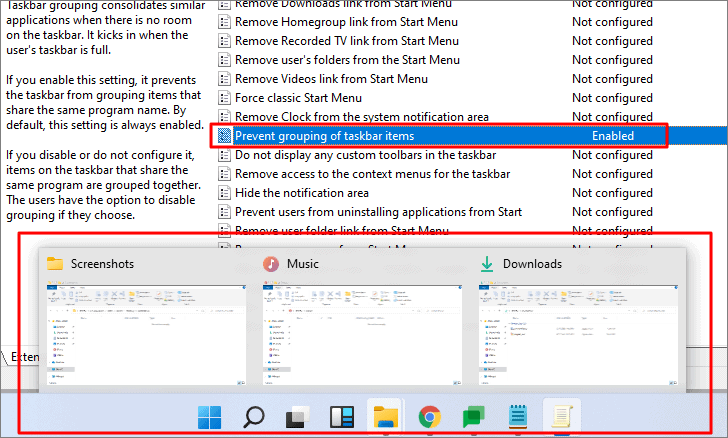Windows 11 brings a host of changes, and one notable difference that many users have encountered is the inability to ungroup taskbar icons. For those who prefer seeing each open window represented individually on the taskbar, this change can be quite unwelcome.
Taskbar Icon Grouping in Windows 11
In Windows 11, all the open windows of a single application are grouped together on the taskbar. This means that instead of seeing a separate icon for each window, you'll see a single icon for each app. To access a specific window, you need to hover over the app's icon and select the desired window from the preview that appears.
While this might streamline the taskbar for some, others find it less efficient. The extra step of hovering and selecting can be both confusing and time-consuming, especially if you're used to quickly clicking on individual taskbar icons to switch between windows.
Why Traditional Methods to Ungroup Taskbar Icons Don't Work
Previously, in Windows 10, there were several ways to disable taskbar icon grouping. Unfortunately, these methods don't seem to work in Windows 11. Let's explore why.
🙅♀️ Missing "Combine taskbar buttons" Option in Taskbar Settings
In Windows 10, you could easily change taskbar grouping behavior through the "Taskbar Settings" by adjusting the "Combine taskbar buttons" option. This setting allowed users to choose whether taskbar buttons are combined and how they appear.

However, in Windows 11, this option is no longer available. When accessing the "Taskbar Settings," you'll notice that the settings interface has changed significantly, and the option to adjust taskbar button grouping is missing.

This means that the straightforward method of ungrouping taskbar icons via settings is no longer accessible in Windows 11.
😑 Registry Edits Don't Change Taskbar Grouping
Another method that was used in previous versions of Windows involved editing the Registry to alter taskbar behavior. By modifying certain Registry keys, users could customize various aspects of the operating system, including taskbar grouping.
The specific Registry path used for this tweak is:
HKEY_CURRENT_USER\Software\Microsoft\Windows\CurrentVersion\Explorer\AdvancedIn this location, the key TaskbarGlomLevel could be adjusted to change how taskbar icons are combined. Setting its value to 2 would ungroup the taskbar icons in previous versions of Windows.

However, in Windows 11, changing this Registry value doesn't affect the taskbar icon grouping. Even after modifying TaskbarGlomLevel, the icons remain grouped, indicating that Windows 11 may no longer reference this key for taskbar behavior.
Note: Editing the Registry can be risky. It's crucial to back up the Registry before making changes and to proceed with caution to avoid system instability.
😠 Group Policy Settings Have No Effect on Taskbar Icons
Another approach involved using the Local Group Policy Editor to prevent taskbar grouping. In Windows 10, enabling the "Prevent grouping of taskbar items" policy would ungroup the taskbar icons.
To try this method:
- Press Win + R to open the Run dialog.
- Type gpedit.msc and press Enter to open the Local Group Policy Editor.
- Navigate to User Configuration > Administrative Templates > Start Menu and Taskbar.
- Find and double-click on "Prevent grouping of taskbar items."
- Set the policy to Enabled and click OK.

Unfortunately, even after enabling this policy in Windows 11, the taskbar icons remain grouped. This suggests that Windows 11 either ignores this policy setting or has changed how taskbar behavior is managed.
Despite trying various methods that worked in previous versions of Windows, ungrouping taskbar icons in Windows 11 doesn't seem possible at this time. While this may be frustrating for users who prefer ungrouped icons, it's possible that future updates to Windows 11 could reintroduce this functionality. For now, users will have to adapt to the new taskbar grouping or explore third-party solutions that might offer more customization.

